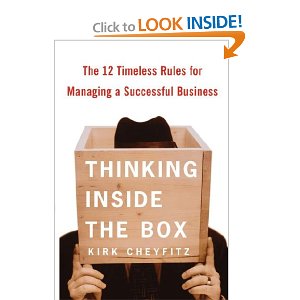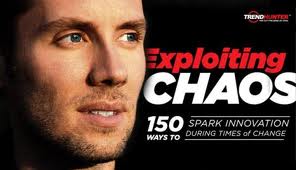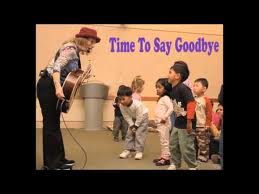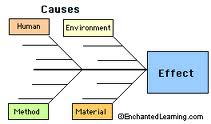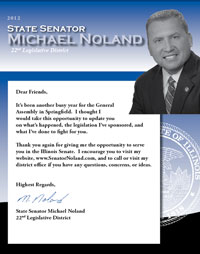 As all of you know, I am a Penelope Burk fan from my head down to my toes. Her book Donor Centered Fundraising is a resource development manifesto for me. I’ve dedicated a number of blog posts to various donor-centered topics ranging from cultivation and stewardship strategies to newsletters and gift acknowledgement letters. I just love blogging about these topics. So, it is especially thrilling for me when a volunteer picks up on these themes and joins the ranks of people spreading the donor centered fundraising message and Penelope’s work.
As all of you know, I am a Penelope Burk fan from my head down to my toes. Her book Donor Centered Fundraising is a resource development manifesto for me. I’ve dedicated a number of blog posts to various donor-centered topics ranging from cultivation and stewardship strategies to newsletters and gift acknowledgement letters. I just love blogging about these topics. So, it is especially thrilling for me when a volunteer picks up on these themes and joins the ranks of people spreading the donor centered fundraising message and Penelope’s work.
Last week, an old Boy Scout friend and volunteer who subscribes to this blog sent me an email. Jim is still a volunteer at Northwest Suburban Council in Mount Prospect, Illinois and he is very involved in the parent-teacher organization at his child’s school. Needless to say, he has been involved in countless fundraising activities throughout the years.
Jim’s email was simply him forwarding me an eBlast from Guidestar that was titled “More Money For More Good” and promoted one of Guidestar’s free guidebook resources that they call “More Money for More Good: Your Nonprofit Guidebook to Fundraising with Impact“.
I always love it when friends, family and blog subscribers send me stuff because I am always on the lookout for topic ideas. So, I read the Guidestar eBlast and it echoed all of the good teaching of Penelope Burk on the subject of donor centered fundraising (e.g. impact, donor communication, etc). I even clicked on the cute, informational YouTube video about “How Nonprofits Can Improve Fundraising, Increase Effectiveness, and Better Engage with Donors“.
[youtube=http://www.youtube.com/watch?feature=player_embedded&v=IS128sCCJUQ#!]
Guidestar is great. They are smart. Their stuff is always quality, and I hope you click-through and access some of their resources because it will surely help your agency with its year-end fundraising efforts.
However, it was the words from my friend, Jim, that resonated most with me because it was straight from a volunteer’s mouth and his point of view (which I think is much more powerful than what any professional organization can communicate).
Here is what Jim said in his first email that included that Guidestar eBlast:
“We know what we’re doing because we do it (almost) every day, but our donors don’t necessarily live and breathe our mission/passion. They’re more apt to help if we remind them what we’re doing & how they could help.”
I couldn’t have said it better, Jim!
In his second email responding to my request to use his name and story as part of this blog, he elaborated more on his original point:
“The reminder about having donors understand my organization’s impact is what jumped out at me. I have people who are so involved and they are my organization’s best cheerleaders, but they do not realize that the people they are soliciting do not really know what we do. Making people understand what we do and why we exist is the key to making them care.”
 Again, I think Jim hits the nail on the head with this last statement and it should give every fundraising professional a tingling sensation when they hear one of their fundraising volunteers or board members vocalize such powerful points of view.
Again, I think Jim hits the nail on the head with this last statement and it should give every fundraising professional a tingling sensation when they hear one of their fundraising volunteers or board members vocalize such powerful points of view.
Perhaps, at this point, you’re wondering how close Jim might have nailed the concept? Well, here is something Penelope Burk said on page 87 of her book about her donor research and this topic:
“23% of study donors always or most of the time receive measurable results of their gifts at work; 29% receive this information sometimes; 55% never or rarely get this information. A number of other questions in the study confirmed that measurable results influence donors’ future support more than anything else.”
How much would you pay to be in the trenches with a fundraising volunteer who ‘gets it’ like Jim? The better question is “what are you doing to help your volunteers achieve these ‘ah-ha’ moments? Once one volunteer has this epiphany, how do you position that same volunteer to become an advocate and help their fellow volunteers have similar revelations?
I think there is an important lesson for all fundraising and non-profit professionals to be learned from Jim’s story. Please scroll down and share a few quick thoughts and answers to the questions above in the comment box below. We can all learn from each other.
Here’s to your health!
Erik Anderson
Founder & President, The Healthy Non-Profit LLC
www.thehealthynonprofit.com
erik@thehealthynonprofit.com
http://twitter.com/#!/eanderson847
http://www.facebook.com/eanderson847
http://www.linkedin.com/in/erikanderson847

